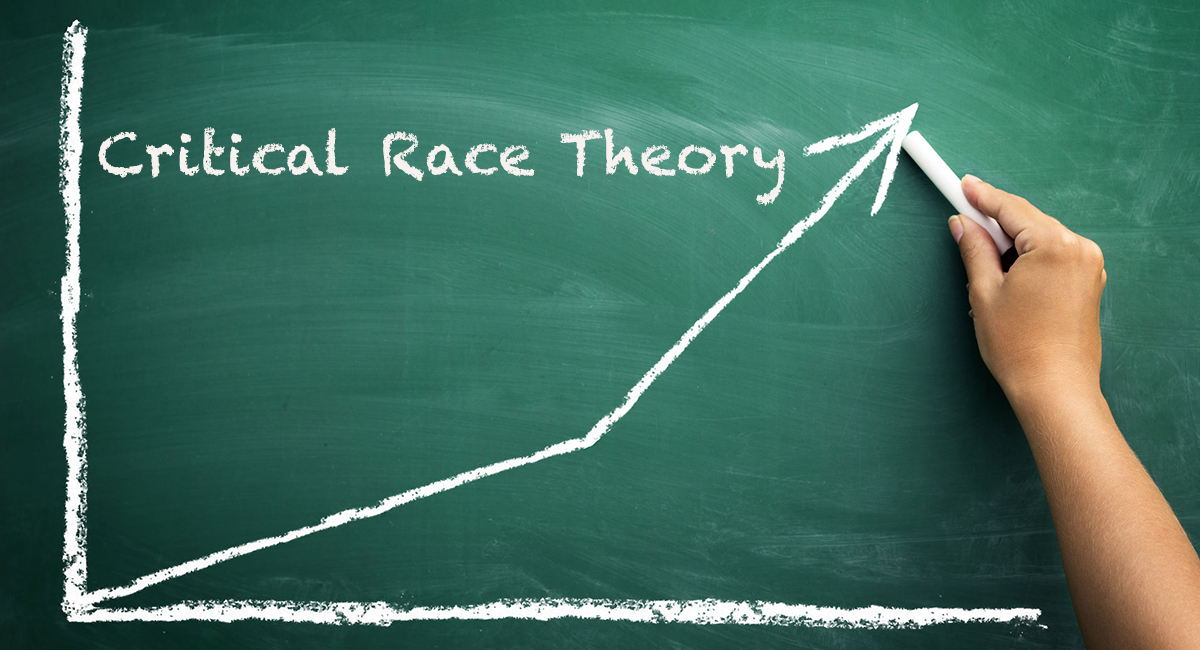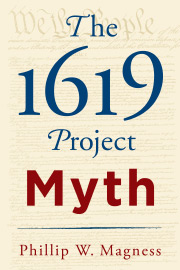The concept of Critical Race Theory (CRT) has sparked heated debate in recent years, particularly after conservative activists singled out this school of thought as a hotbed of applied Marxism in both higher and K-12 education. The response from CRT’s defenders has been peculiar, to put it mildly.
Just over a decade ago, leading CRT scholars Richard Delgado and Jean Stefancic boasted about how this school of thought had moved beyond its law school origins and “taken root in other academic disciplines, including sociology, social work, and education.” According to Delgado, “We didn’t set out to colonize, but found a natural affinity in education” schools and programs. “Seeing critical race theory take off in education has been a source of great satisfaction for the two of us,” he continues, noting, “Critical race theory is in some ways livelier in education right now than it is in law...”
This celebratory account of CRT’s growing influence contrasts sharply with the flurry of media depictions in recent years, almost all of which attribute a “moral panic” over CRT to a September 2020 episode of Tucker Carlson’s program on Fox News. According to the New Yorker, conservatives “invented the conflict over Critical Race Theory.” MSNBC host Joy Reid repeatedly claimed that CRT was just an obscure theory from advanced seminars in legal academia, insisting that the political right had “manufactured” a controversy by falsely claiming that its doctrines had migrated into the broader education system. NPR singled out the date of the Carlson broadcast and its guest Chris Rufo of the Manhattan Institute as the “origin” point of the CRT debate, as did The Atlantic, Time Magazine, and several other outlets. From mid-2021 to the present, the main defenders of CRT have advanced similar claims, suggesting it was just an obscure and largely innocuous academic theory until the political right made it into an issue by falsely alleging its expansion into teacher training in the very same education programs that Delgado and Stefancic bragged about.
The tension between these two competing claims is obvious. If CRT’s academic presence was indeed growing rapidly in education programs over the last decade, then Carlson was responding—albeit bombastically—to a real and observable trend that predates September 2020. If, on the other hand, Reid and other media defenders of CRT are correct, then we should see little evidence of CRT’s permeation beyond advanced law school seminars until the right made it into a “bogeyman” on the Fox News broadcast, to quote their characterization.
Understanding CRT
So what exactly is CRT? The concept itself is notoriously fluid, with even its proponents struggling to offer a coherent and simple definition. Briefly summarized, though, CRT is an applied extension of critical theory to race. This much is openly acknowledged by Kimberle W. Crenshaw, who first proposed the name CRT at an academic workshop in the 1980s. As Crenshaw recounts, “the organizers coined the term ‘Critical Race Theory’ to make it clear that our work locates itself in the intersection of critical theory and race, racism, and the law.”
Critical theory, in turn, refers to a broader school of thought emerging from Marxist theorists Max Horkheimer, Herbert Marcuse, and Theodor Adorno in the 1920s and ’30s. Positioning themselves as a breakaway branch of Marxist thought from its Leninist-Revolutionary doctrines in the Soviet Union, these early critical theorists styled themselves in opposition to what Horkheimer called “traditional theory”—i.e. that which purports to explain the world through conventional scientific and descriptive methods but which, in the eyes of critical theorists, really exists to reinforce the power relationships of a ruling class over the masses. The critical theorist, by implication, aims not to describe but to disrupt and overturn these alleged power disparities. The entire epistemic framework is accordingly a call to radical “activism” in the form of doing scholarship, pedagogy, and commentary about almost any aspect of society.
This basic framework, in turn, may be seen in the self-descriptions used by CRT practitioners, albeit with a specific focus on race. Delgado and Stefancic accordingly define the CRT movement as “a collection of activists and scholars engaged in studying and transforming the relationship among race, racism, and power.” They situate CRT as having a shared interest with conventional civil rights issues surrounding race. The commonalities end there though. “Unlike traditional civil rights discourse,” they continue “which stresses incrementalism and step-by-step progress, critical race theory questions the very foundations of the liberal order, including equality theory, legal reasoning, Enlightenment rationalism, and neutral principles of constitutional law.”
Crenshaw describes the founders of CRT as a “collection of neo-Marxist intellectuals, former New Left activists, ex-counter-culturalists, and other varieties of oppositionists in law schools” who set out to disrupt the liberal legalist tradition of viewing law as a neutral arbiter of rules. Exemplifying the critical vs. traditional theory dichotomy, Crenshaw charges the traditional liberal-enlightenment view of law with having an “ambivalence toward race-consciousness,” symptomized in its “continued investment in meritocratic ideology.” While she views these issues as being most pronounced in areas of race, Crenshaw makes it absolutely clear that a radical economic program undergirds her position. She accordingly lists the “lukewarm liberal defense of the Great Society programs” and the failure to adopt radical economic redistribution as further failures of more traditional paradigms.
In her more recent work, Crenshaw has extended this critical theory attack to the entirety of conventional non-Marxian economics. She contends “the emergence of economics as a discipline from its previous locus inside moral philosophy suppressed the study of socially constructed institutions” and, citing discredited work by far-left academics like Nancy MacLean, asserts that “the core logic of an entire academic subfield,” public choice, is “implicitly constituted around assumptions of white supremacy, even as it disavowed any racial intent and animus.” Such stark language establishes not only the hostility of CRT to economics as a science. It shows that CRT, at its heart, is an anti-capitalist ideology.
Measuring the Critical Theory Turn
The question of CRT’s emergence as a point of contention in national debate could be reframed as a matter of whether the September 2020 coverage sparked the current controversy by pushing an obscure specialized theory into the limelight, as CRT’s media defenders contend, or whether this show was simply responding to an already-emerging and rapidly expanding academic movement, as Delgado and Stefancic’s earlier comments suggested.
Google’s Ngram viewer helps to shed some light on this question, by tracking the use of CRT terminology over time. One of the central concepts of CRT is “intersectionality,” a term first proposed by Crenshaw in 1989 and expanded upon in a 1991 article that is considered one of the defining works of the CRT genre. Intersectionality serves as a mental model for social interactions when a person is a member of multiple overlapping groups and identities (race, gender, ethnicity, religion, and the like), illustrating differences in experience compared to each characteristic in isolation (for a detailed discussion of intersectionality theory and the problems with it, see this article that I wrote in May 2020).
As both a proprietary term to have originated in the CRT movement, and one of its best-known concepts, the term “intersectionality” presents an almost ideal metric to track CRT’s influence over time. We see the results in the figure below.

The term had only a small and limited adoption for the first decade and a half after its introduction by Crenshaw. Then, starting around 2006, it began to rapidly increase in use. The pattern accelerated further around 2013-2014, the period that even left-leaning commentators have dubbed the “Great Awokening” to signify an emerging radicalization in leftist viewpoints on campus. Intersectionality skyrocketed from 2014 to 2019, the most recent year in the Ngram database.
For perspective on the scale of this adoption, the chart below compares intersectionality with another proprietary academic term, the much-derided concept of “neoliberalism.” The popularization of “neoliberalism” as a label predates Crenshaw’s “intersectionality” by about a decade, with its modern discussion tracing to a series of lectures given by the French philosopher Michel Foucault in the late 1970s. It’s therefore entirely expected that intersectionality, which wasn’t coined until 1989, would lag behind neoliberalism. The trajectories of both are nonetheless revelatory. Between 2005 and 2019, “intersectionality” gained over half the ground between it and “neoliberalism,” one of the trendiest academic buzzwords in existence.

It is likely not coincidental that the “Great Awokening” and the popularization of intersectionality directly coincided with a historic leftward shift in university faculty affiliation. Survey data of US faculty political opinions have existed since the 1960s, having been originally collected by the Carnegie Commission on Higher Education, and later by the UCLA Higher Education Research Institute (1989-present). While left-leaning faculty were always a plurality on campus, their numbers rapidly increased between the early 2000s and the present. Currently, some 60 percent of faculty identify on the political left. In many humanities and social sciences, this number tops 80 percent.

Notably, these shifts in faculty politics have accompanied an increasing prioritization of political activism in the university system. In 2008, and again in 2016, the UCLA survey asked faculty participants if they believed it was their role to “encourage students to become agents of social change.” In only 8 years, the percentage of respondents who said “yes” grew from 57.8 percent to 80.6 percent. While this indicator only captures a slice of classroom instruction, it is consistent with the expanding influence of critical theory, and particularly its “critical pedagogy” outgrowth, which strongly emphasizes using classroom instruction to cultivate political activists.
A third datapoint gives us a direct glimpse at how the CRT movement has rapidly expanded in its academic influence. While CRT may have been a niche subject as recently as the 1990s, academic journal citations of CRT scholars exploded around the time of the “Great Awokening,” as well. The chart below shows the annual Google Scholar citation counts of several prominent CRT scholars (as well as critical pedagogy theorists Paulo Freire and Henry Giroux), indexed to a common starting point for scale. A marked upturn in citations begins in the late 2000s and accelerates in the mid 2010s. At present, Delgado regularly amasses over 3,000 citations per year. Fellow CRT scholar Derek Bell tops 6,000 citations per year. And Crenshaw leads the pack, with 16,000 citations, making her one of the most frequently referenced scholars today in the humanities and social sciences.

In each of these empirical indicators, the surge of academic interest in left-leaning politics generally, and CRT in particular, happened around the same time, starting in the mid-2000s and rapidly accelerating in the mid-2010s. All of these patterns were well underway before the September 2020 Fox News broadcast on CRT. That broadcast certainly drew attention to CRT and polemicized its coverage. But far from being an “obscure legal theory,” CRT had already spread widely in academia going back a decade prior. It remains in a position of extremely high influence today, albeit with greater external scrutiny than it has ever faced. And that scrutiny has induced defensive revisions of its own academic history by CRT proponents.










